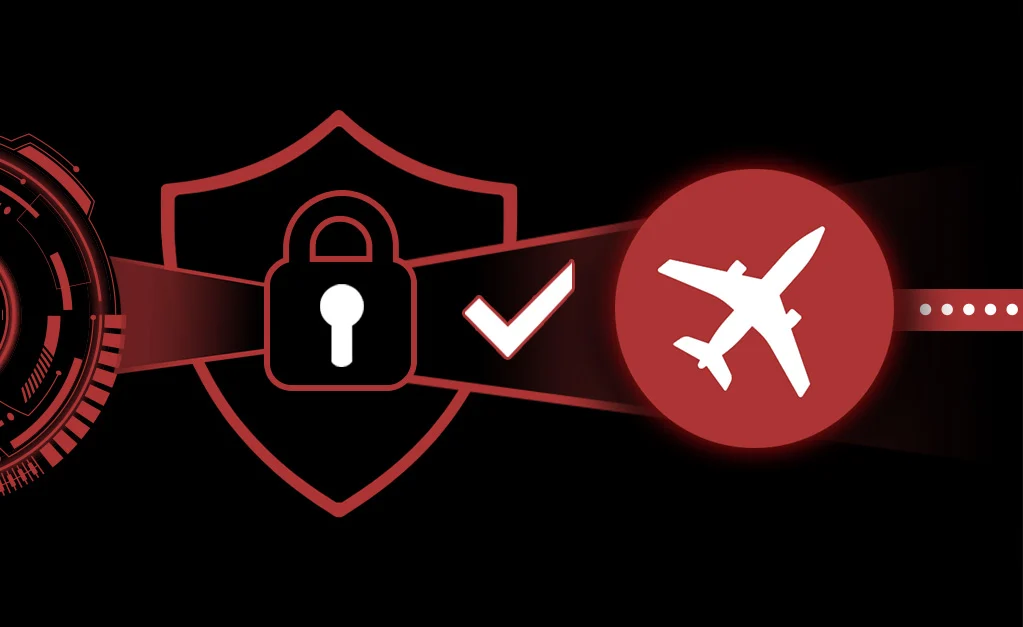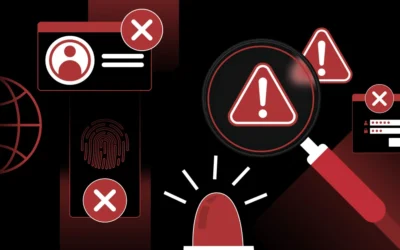Grounded by Data: Why Airlines Need to Treat Cybersecurity Like Flight Safety

When 1.2 million WestJet customers learned their personal and loyalty data had been exposed in a June 2025 breach, it wasn’t just another headline, but a signal flare for the entire aviation industry.
The incident underscored a reality many airlines are still coming to terms with: while flight operations are built on rigorous safety standards, digital operations are often held together by good intentions and fragmented security.
Airlines have long perfected physical safety. They simulate failures, cross-check every step, and never let routine breed complacency. But in cybersecurity, that same discipline is often missing. And as recent attacks show, data, not the aircraft, is now what’s truly at risk.
Why Airlines Are Prime Targets in the Digital Skies
The modern airline runs on more than jet fuel. It runs on data. Passenger identities, payment details, loyalty rewards, and travel histories all flow through cloud applications, call centers, and partner systems. That makes airlines a goldmine for attackers.
This year alone, several major carriers faced breaches:
- WestJet (Canada): Data of 1.2 million customers accessed by a “sophisticated criminal group.”
- Qantas (Australia): Nearly 5.7 million customers impacted through a third-party servicing platform.
- Hawaiian Airlines (US): System disruptions under investigation, with potential exposure of IT assets.
The FBI has warned that threat actors like Scattered Spider are actively targeting airlines, often through social engineering and third-party IT vendors. The goal isn’t to take down planes but to steal data that can be weaponized through fraud, identity theft, and extortion.
In short, attackers have realized that trust is the new runway. Breach it once, and recovery takes more than patches. It takes rebuilding credibility.
The Cultural Gap: Cybersecurity vs. Flight Safety
Aviation is defined by its safety culture. Every flight is a checklist-driven exercise in precision: pre-flight checks, simulations, redundancy planning, and clear accountability.
Cybersecurity, in contrast, often lacks that structure. It’s too frequently seen as an IT issue rather than a core operational imperative.
Imagine if a pilot only inspected the aircraft once a year, or if maintenance logs weren’t continuously updated. It sounds absurd—but that’s how many organizations approach cyber hygiene: periodic audits, reactive patches, and siloed visibility.
If airlines applied the same operational rigor to cybersecurity that they do to flight safety, incidents like WestJet’s would be detected mid-flight, not after landing.
Where Airlines Face the Greatest Cyber Turbulence
Even the most secure airline infrastructure faces blind spots when multiple systems, vendors, and clouds interact. The biggest pain points include:
- Third-party exposure: Breaches often begin with a trusted vendor’s compromised platform, like a call center or SaaS app.
- Cloud sprawl: Multi-cloud environments expand rapidly, creating misconfigurations and policy drift.
- Fragmented data flow: Passenger and loyalty data move across global systems with varying levels of protection.
- Compliance fatigue: Balancing ISO 27001, PCI DSS, GDPR, and regional mandates stretches teams thin.
The truth is, most breaches don’t happen from a lack of technology. They happen because of a lack of visibility. Without a unified picture of risks across the digital environment, even sophisticated defenses can miss the signal.
Lessons from WestJet: Responding Is Not Enough
WestJet’s quick response helped contain the incident and reassure customers that flight operations were never compromised. But the deeper lesson is clear: response is not readiness.
Attackers often dwell inside systems for weeks or months before discovery. By the time the breach is detected, data exfiltration is already complete. For an industry built on tight operational timing, this lag is unacceptable.
The mindset must shift from “incident response” to “continuous monitoring and readiness.” Just as pilots rely on live instrumentation to guide every decision, security teams need real-time threat data to keep digital operations stable.
Reimagining Cyber Readiness Through Continuous Visibility
In aviation, visibility is everything — and the same principle applies to cybersecurity. Airlines need a unified view of their cloud and SaaS environments to detect misconfigurations, identity risks, and active threats before they escalate.
That’s where CheckRed brings real operational value. It delivers continuous visibility and automated control across every layer of a digital ecosystem through:
- Cloud Security Posture Management (CSPM): Provides a continuous assessment of configurations across public cloud environments, identifying risks, enforcing security policies, and maintaining compliance with frameworks like ISO 27001, PCI DSS, and GDPR.
- SaaS Security Posture Management (SSPM): Monitors and secures business-critical SaaS applications such as collaboration, HR, and travel systems—detecting unauthorized access, weak configurations, and data exposure risks.
- Identity Security: Maps user privileges across cloud and SaaS platforms to identify excessive permissions, dormant accounts, and potential lateral movement paths.
- Threat Detection and Correlation: Continuously analyzes activity across environments to detect anomalies, correlate alerts, and prioritize threats based on real exposure, not noise.
Together, these capabilities help security teams move from reactive investigation to proactive control: anticipating risks, maintaining compliance, and ensuring the resilience of digital operations.
Building a Cyber Safety Culture
Technology is only half the flight plan. The other half is mindset. Airlines can strengthen their defenses by embedding cybersecurity into everyday operations:
- Conduct regular “cyber drills” just like safety drills.
- Integrate security metrics into executive dashboards and performance reviews.
- Reward early detection and policy adherence, not just clean audit results.
- Train staff across ground operations, call centers, and IT to recognize phishing and social engineering.
As the Qantas and WestJet breaches showed, even well-secured systems fall when people or partners become the entry point. A strong cyber safety culture closes that gap.
Conclusion: Preparing for Safe Digital Takeoff
As the aviation sector becomes increasingly digital, the boundary between flight safety and data safety continues to blur. Protecting passengers now means protecting their data, their trust, and the integrity of every digital interaction.
With complete cloud protection, continuous visibility, automated compliance, and proactive threat detection, CheckRed helps organizations achieve the same level of resilience in cyberspace that airlines have achieved in the skies.


